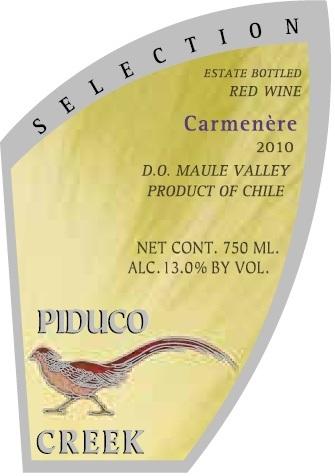2010 Maule Valley Carmenere
Piduco Creek Carmenère from the 2010 vintage is a captivating red wine hailing from the renowned Maule Valley region. This wine displays an inviting deep crimson color that hints at its rich character. With a medium body, it strikes a harmonious balance that enhances its overall appeal. The acidity is bright and lively, providing a refreshing counterpoint to the wine’s bold flavors. Notably, the fruit intensity is prominent, showcasing delightful notes of black fruits paired with subtle hints of spice. The tannins are integrated and firm, lending structure without overpowering the palate. This Carmenère is crafted to be dry, allowing the complex flavors to shine through, making it a wonderful companion for various dishes.
Piduco Creek Carmenère from the 2010 vintage is a captivating red wine hailing from the renowned Maule Valley region. This wine displays an inviting deep crimson color that hints at its rich character. With a medium body, it strikes a harmonious balance that enhances its overall appeal. The acidity is bright and lively, providing a refreshing counterpoint to the wine’s bold flavors. Notably, the fruit intensity is prominent, showcasing delightful notes of black fruits paired with subtle hints of spice. The tannins are integrated and firm, lending structure without overpowering the palate. This Carmenère is crafted to be dry, allowing the complex flavors to shine through, making it a wonderful companion for various dishes.




